Designing for Autism
Empowerment, Awareness, & Acceptance
February—April 2017 | 12 weeks | Individual Capstone Project
STAKEHOLDERS Children with autism | Families impacted by autism | Service providers
MY ROLE User Research | Participants Outreach | Insights Communication
Overview
In a society designed around the needs of neurotypical people, individuals with autism almost always struggle to fit in. I started this research project to investigate what designers can do to promote autism awareness and acceptance. After a month of observation, contextual inquiries, interviews, and co-design activities, I identified why autism acceptance is essential, what exactly is autism acceptance, as well as design scenarios and strategies. I produced multiple artifacts to communicate research insights to various stakeholders—detailed research report, inspiration-in-a-box, booklet, and poster.
CONTENTS What is autism | Current state analysis | Research activities | How to break the vicious cycle with autism awareness | Design scenarios, strategies, and constrains | Reflections
WHAT IS AUTISM?
Individuals with autism have less cognitive resource
for social interaction
Autism is a group of neurodevelopmental conditions. Due to the atypical neurological development, individuals with autism have distinctively atypical ways of sensorimotor processing, thinking, and interacting.
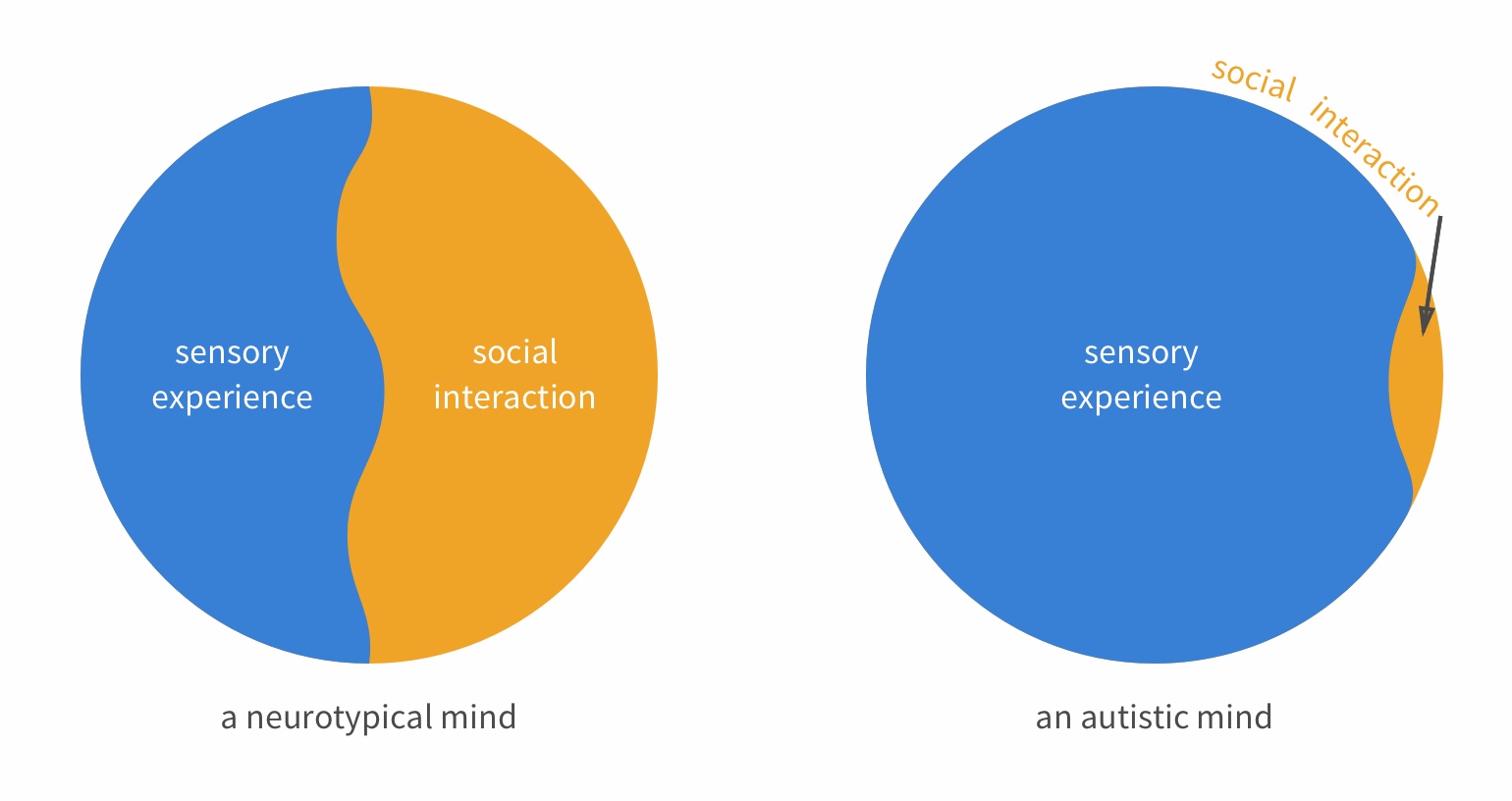
The autistic mind tends to register more information, resulting in a sensory experience that is more intense and chaotic. The ongoing task of integrating and navigating this intense experience requires lots of attention and energy, and leaves autistic individuals with less than enough attention to focus on social interaction.
CURRENT STATE ANALYSIS
Lots of intervention. Not enough acceptance.
After reviewing 16 designs that are dedicated to helping autistic children (as well as 34 designs that aim to reduce stereotypes for people with special needs), I found most of them on a spectrum of Intervention—Acceptance.
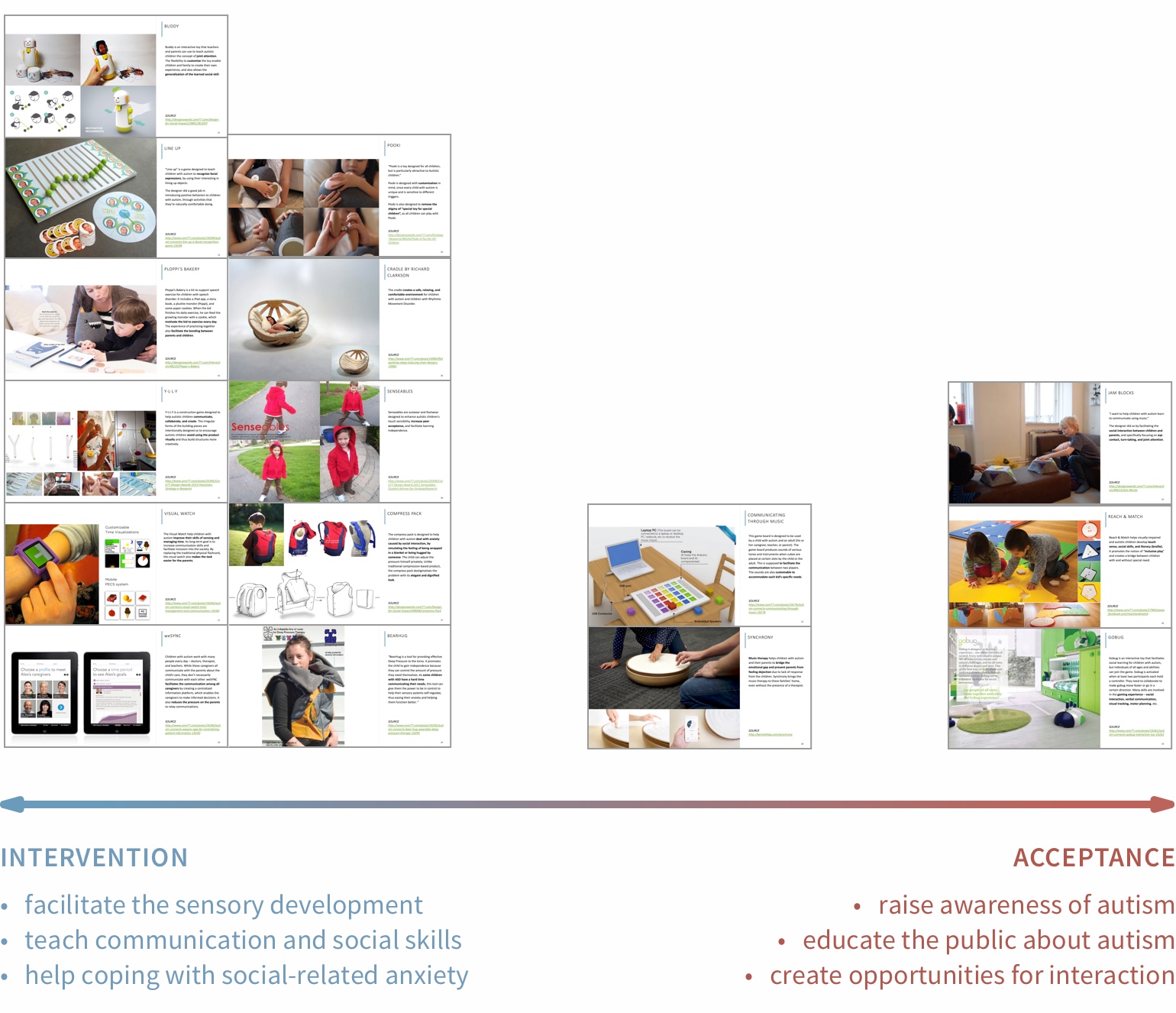
Intervention and Acceptance are two different perspectives
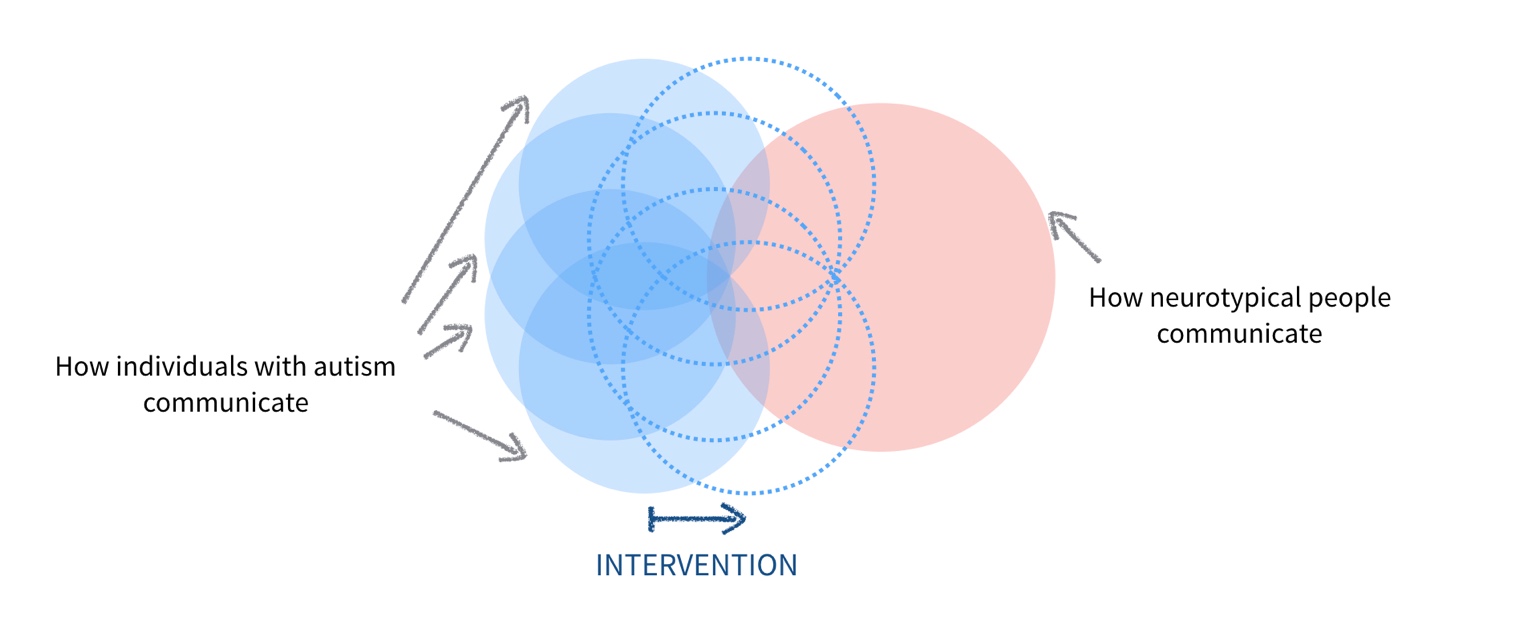
Intervention empowers autistic children by changing how they communicate and interact, in a way that is more acceptable by non-autistic individuals.
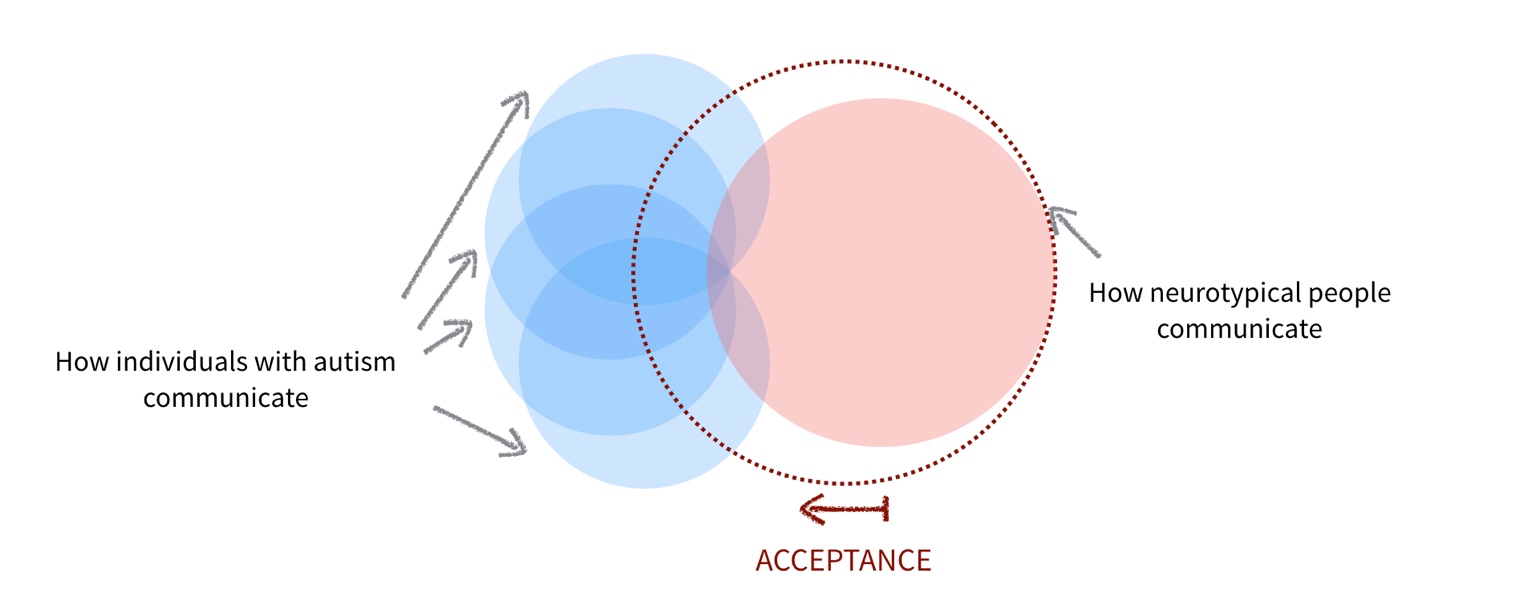
Acceptance helps autistic children by changing how non-autistic individuals think about autism and how they communicate and interact.
I focused this project on promoting autism acceptance
More specifically, I wanted to understand how autistic individuals interact with people and the world and to seek ways of promoting such understanding and acceptance among neurotypical people.
I made this decision based on my personal predisposition that autism is part of the human biodiversity that needs to be accepted, and not a disease that needs to be cured. (I had been constantly reconsidering my view on intervention vs. acceptance throughout the project. See how my view has changed here.)
RESEARCH ACTIVITIES
Observations. Interviews. Research through design.
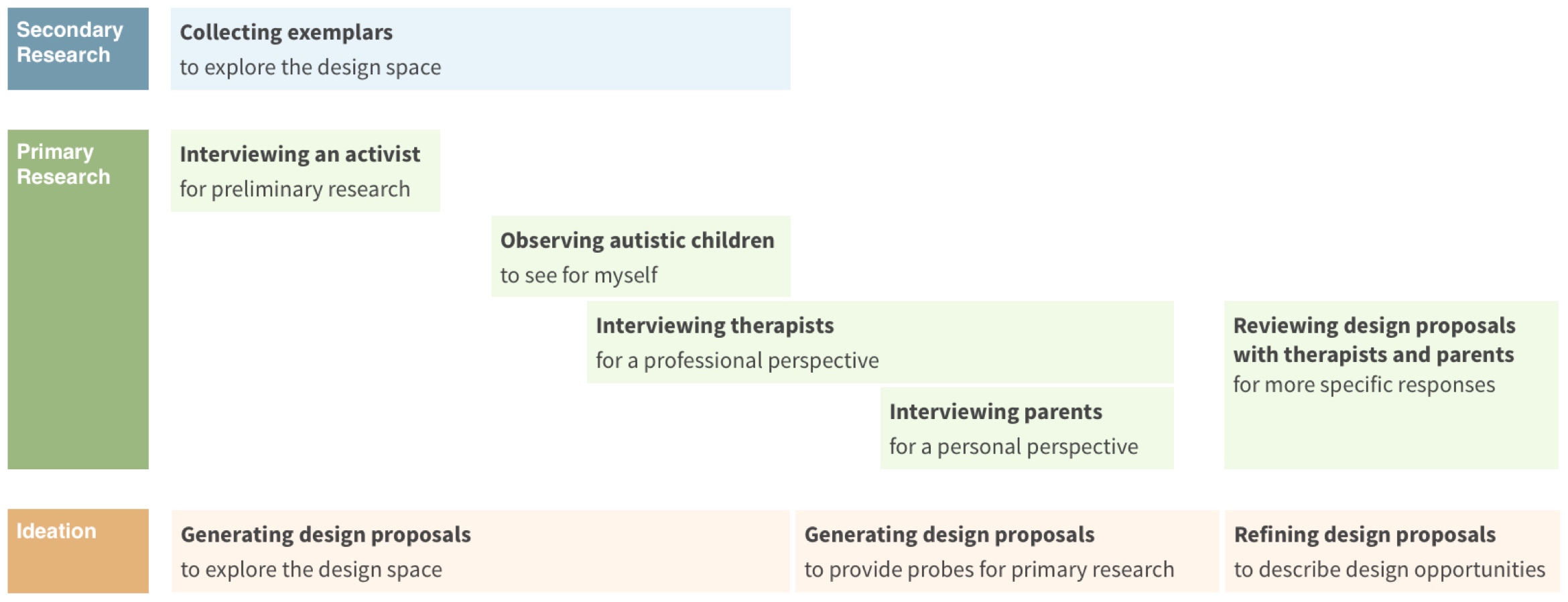
Research participants

An activist for autism
I interviewed the president of Monroe County Autism Foundation, to learn about his experience of advocating for people with autism and their families.

Two children with autism
Both children are on the low-functioning of the spectrum. I spent 3+ hours with each of them to observe and to immerse myself in their day-to-day.
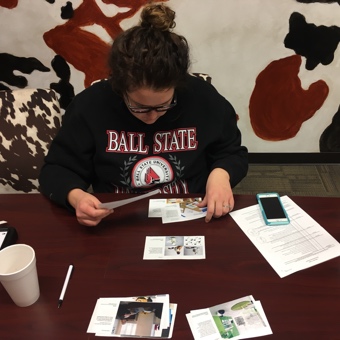
Their therapists
Both children received applied behavioral therapy from Little Star Center. For each kid, I talked to one of their therapists to find out how these children learn living and social skills.
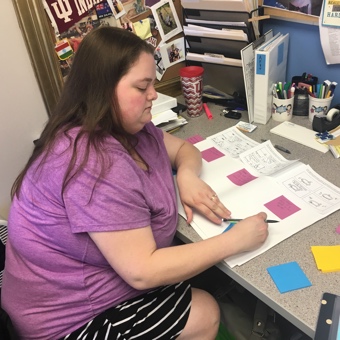
Their parents
For each child, I talked to one of their parents to learn about how their families spend time together and what their experience is like in the community.
Research methods (and why I chose them)
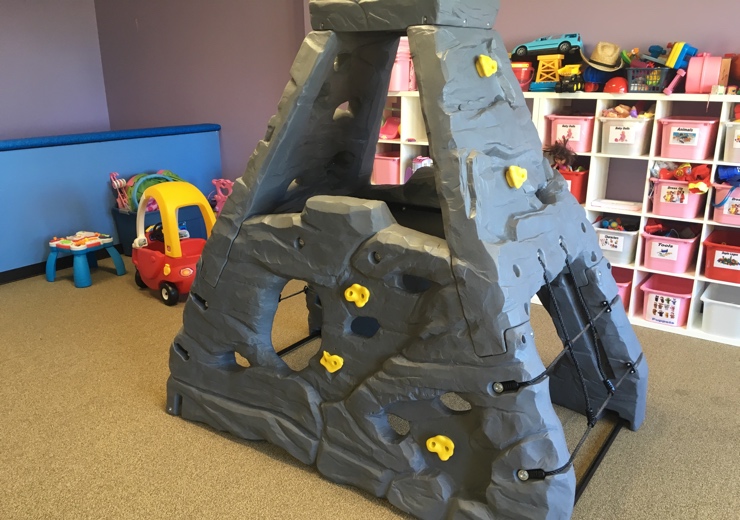
Fly-on-the-wall observation
During the first hour of the observations, I stayed back as much as possible, to not interfere with what the therapists and the child would usually do. I took notes of my observations and questions for later use.
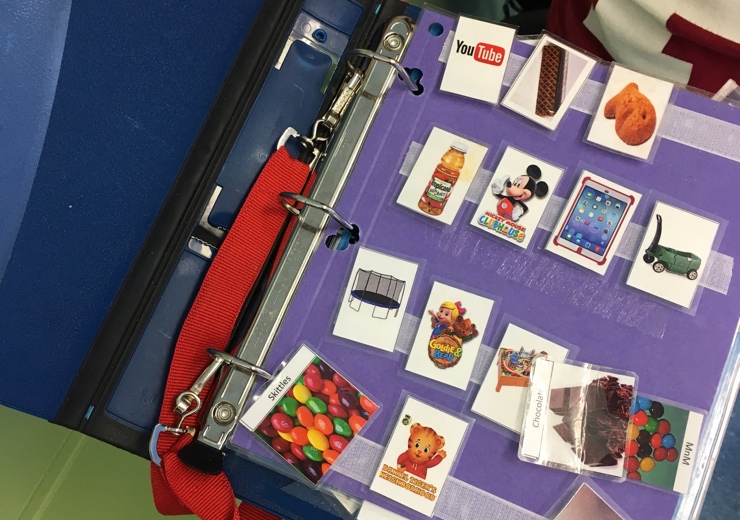
Contextual inquiry
Later on in the observations, when one of the therapist had time to talk to me, I asked questions about why they do what they do with the children, based on what I see in the moment and notes from earlier.
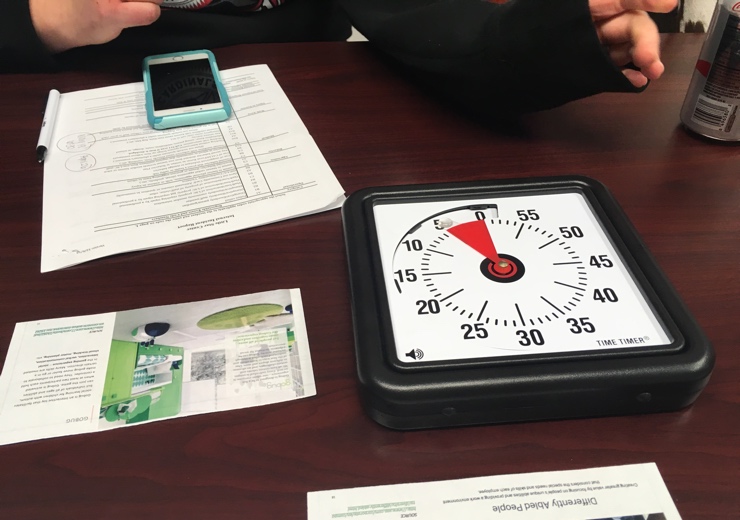
Narrative inquiry
In the interviews, I tried asking questions about the specifics, so that the interviewees would be more likely to recall something relevant from their previous experience and tell me a story about these recollection.
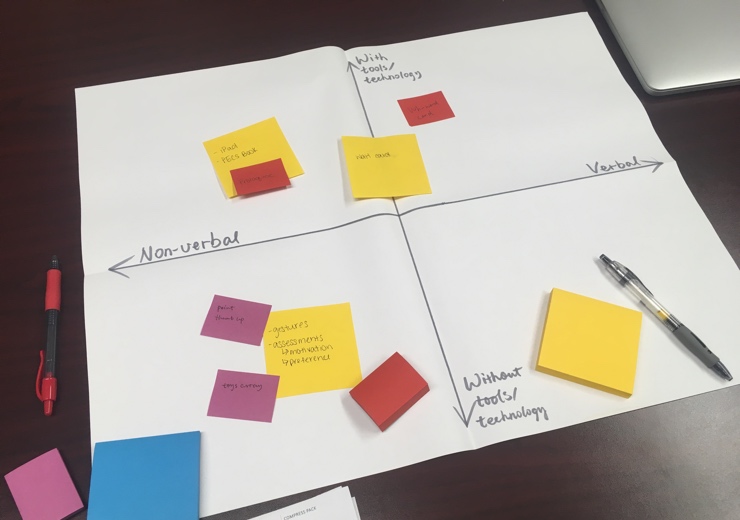
Mapping toolkit
In the interviews with therapists, I asked them to write out the communication methods that they use and map it onto two axes, verbal—nonverbal and tools—no-tools. I used the map as a visual aid to probe the therapists to think about all the methods that they use.
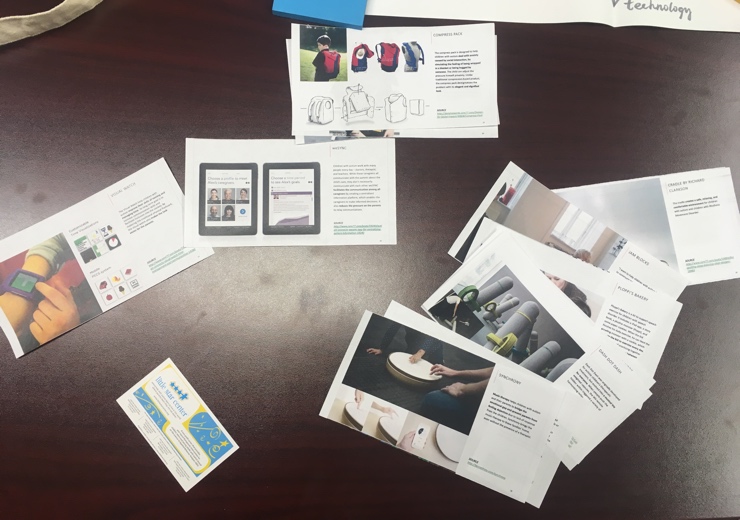
Photo probes
I selected 18 designs about autism and asked the interviewees for feedbacks. How do they feel and think about these designs? How do they relate their past experience to the designs? These probes helped bring out insights that would not come up in our conversations otherwise.
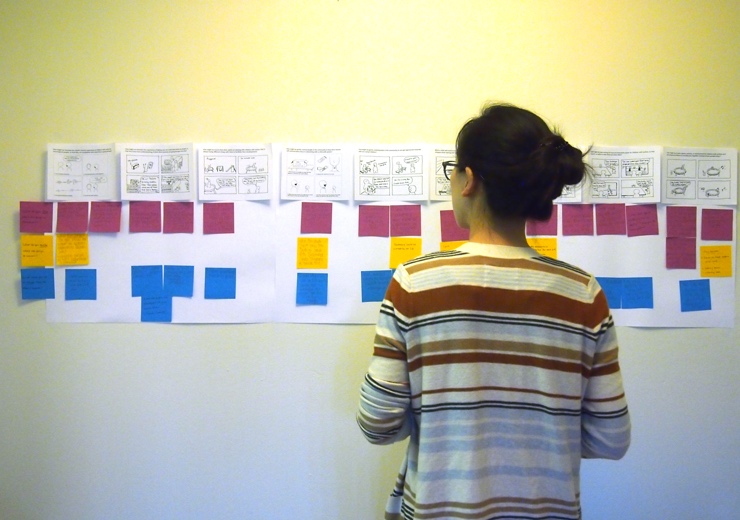
Storyboarding and co-design
I storyboarded 10 design proposals and asked therapists and parents for feedback and their design suggestions. These design and co-design activities furthered the research by helping me identify the design scenarios, strategies, and constrains.
INSIGHTS
How to break the vicious cycle
with autism awareness
The roles of Intervention and Awareness in the social development of these children became clearer to me. I also realized that Awareness and Acceptance is essential to continually improving their social development and quality of life.
Genetics and social factors together form a vicious cycle that hinder the social development of children with autism.
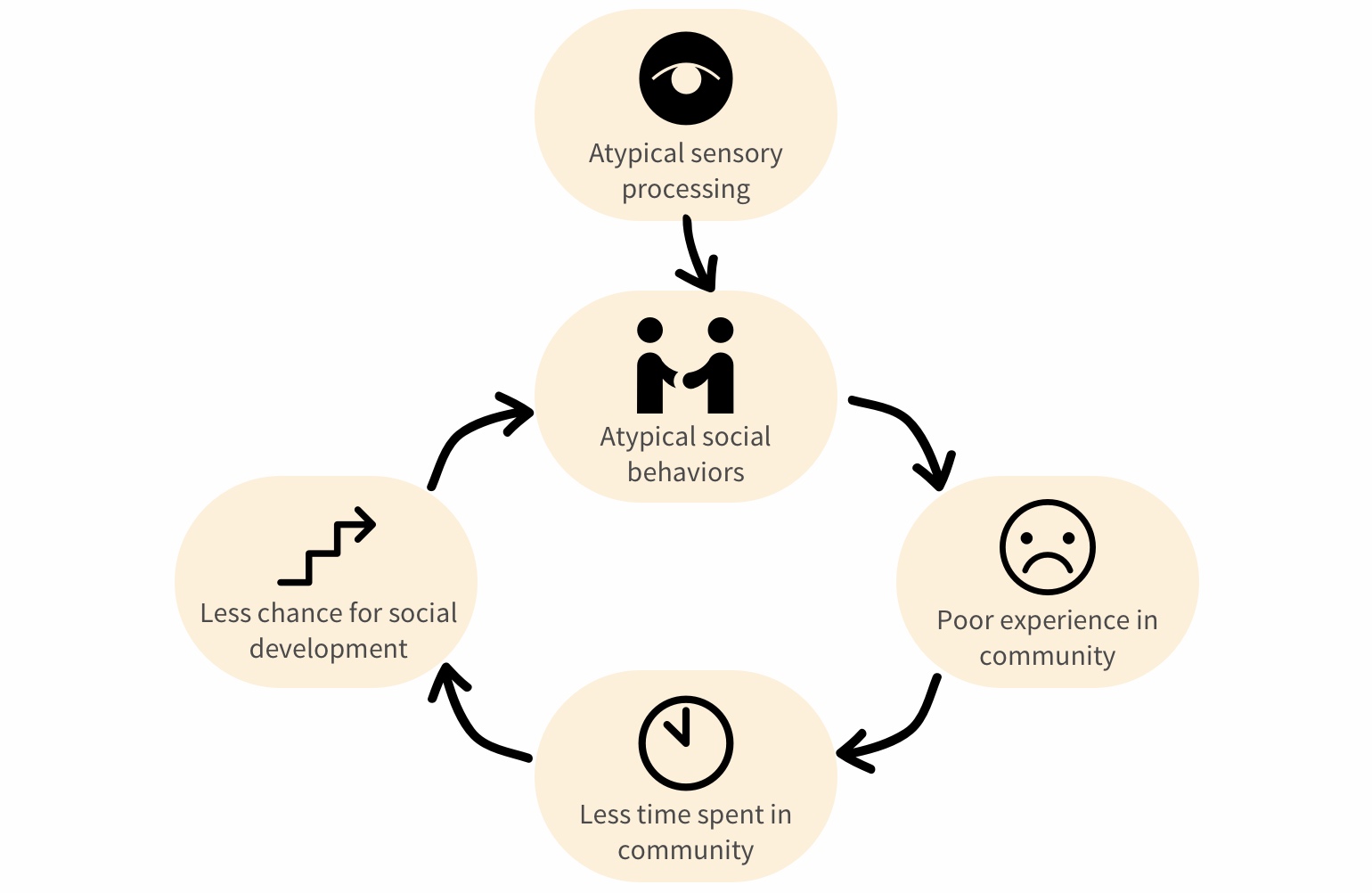
Intervention and Awareness breaks the vicious cycle at two different points. Both are necessary to keep it from coming back.
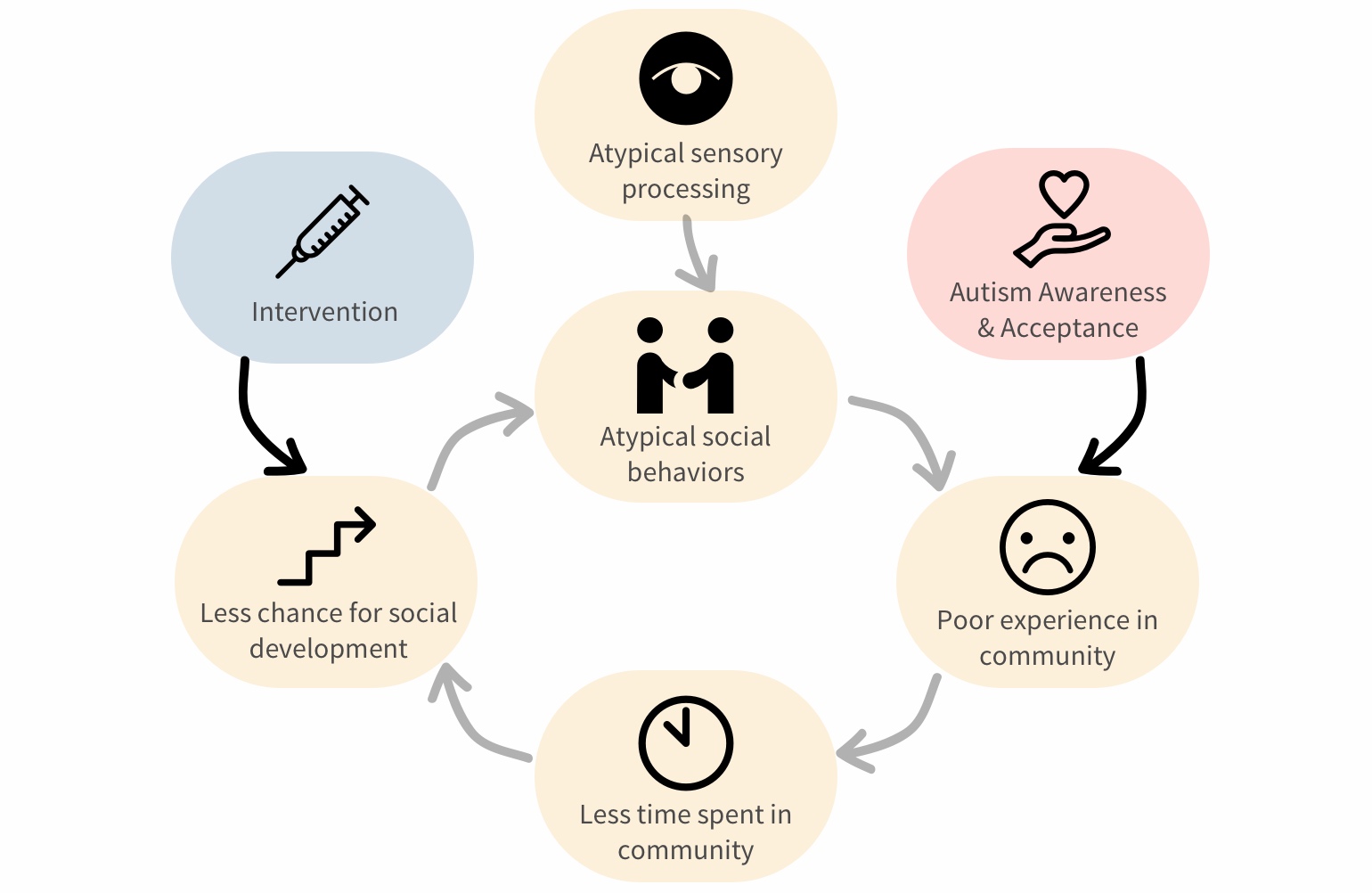
How can we practice autism awareness and acceptance?

Understand that autism is a spectrum.
No two kids with autism are the same, just like no two neurotypical kids are the same. The diagnose “autism” doesn’t describe who they are, what their interests are, or what they are capable of.
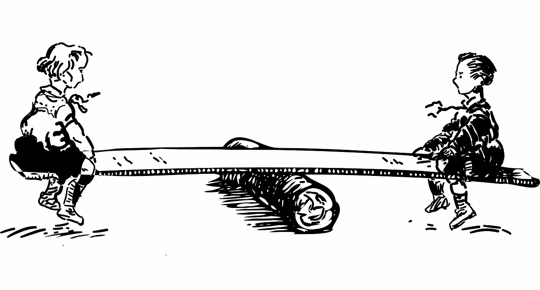
Treat them like you would any other kids.
One, never talk to them as if they were less than you; don’t use baby talk; don’t talk poorly of them in front of them. Two, keep the accommodation to a reasonable level to give them space to grow.
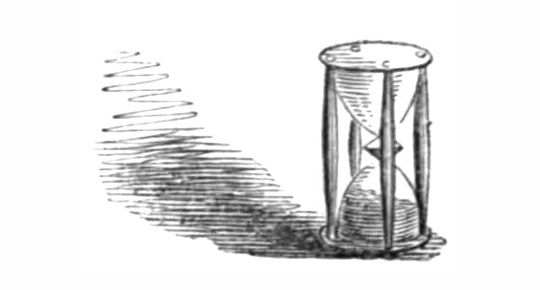
Be patient as they learn to function in the community.
Their behaviors in the community might be inappropriate and puzzling to many of us. Accept that you may not always know why they do what they do. Don’t stare. Don’t judge. Ask if you can help.
MORE INSIGHTS
Design scenarios, strategies, and constrains
I sketched out ten sets of design scenario/concept in the form of storyboards to playfully explore how design could promote autism awareness and acceptance. The therapists and the parents reviewed these storyboards and provided further feedback on constrains and considerations.
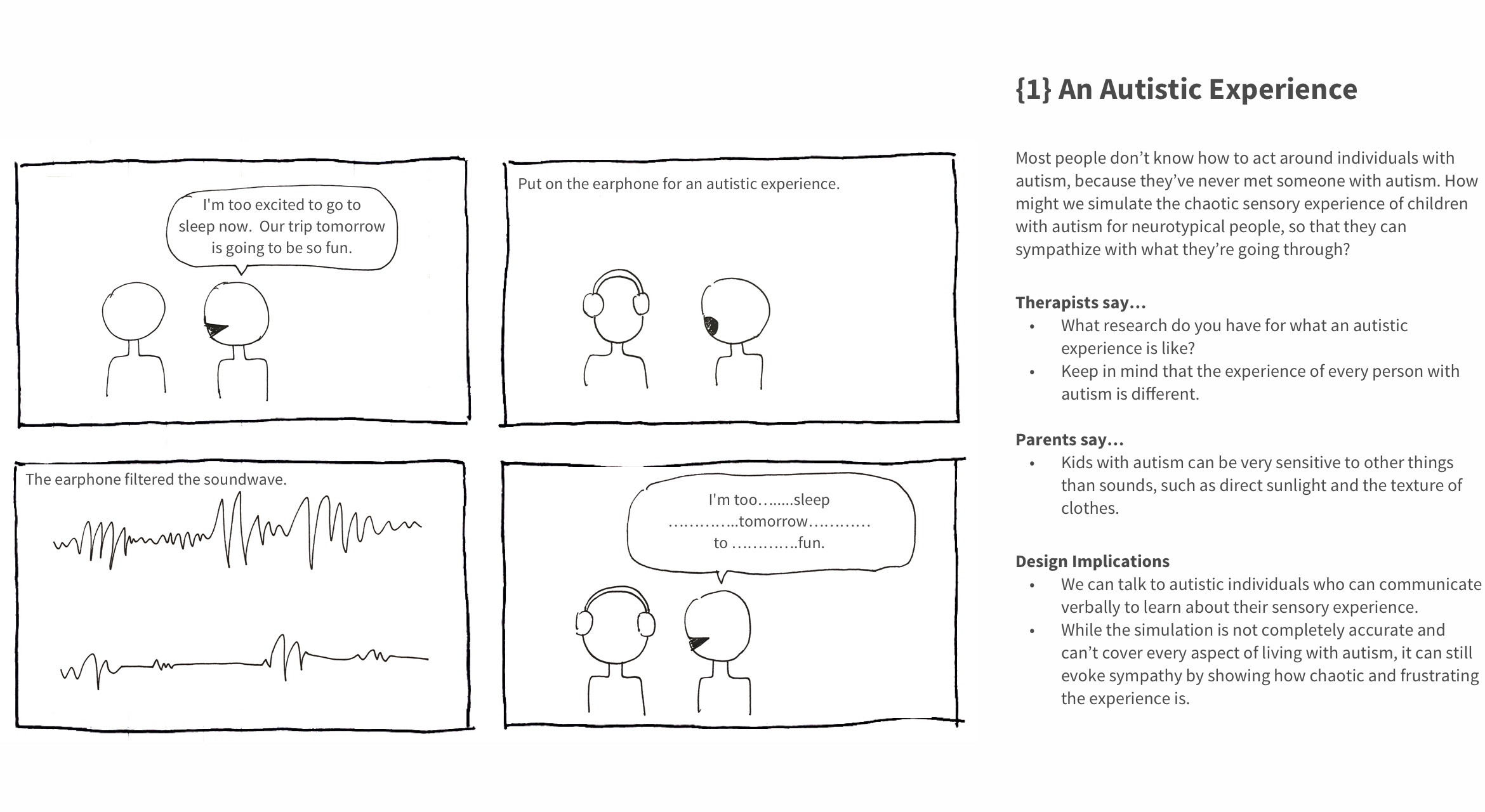
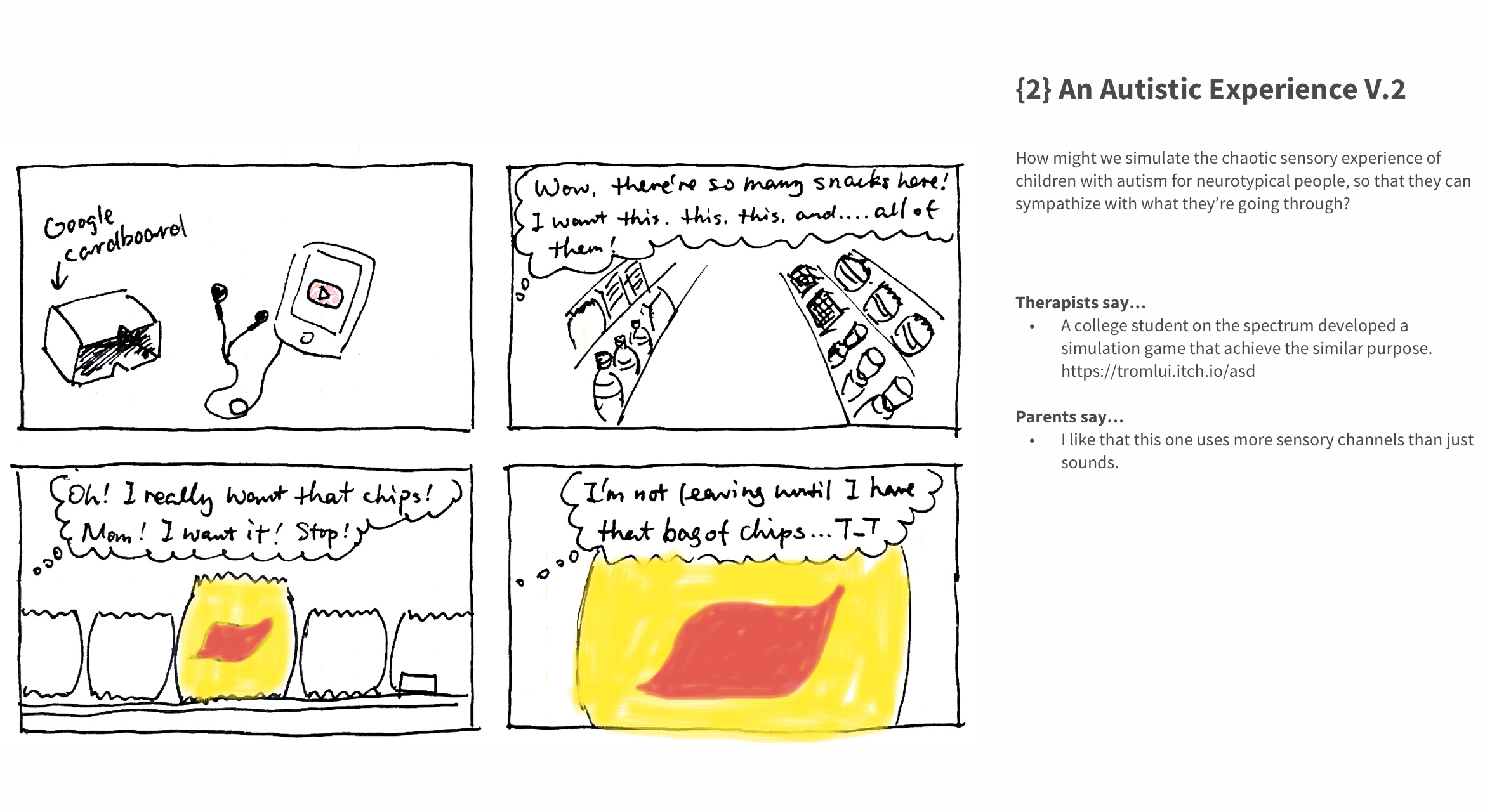
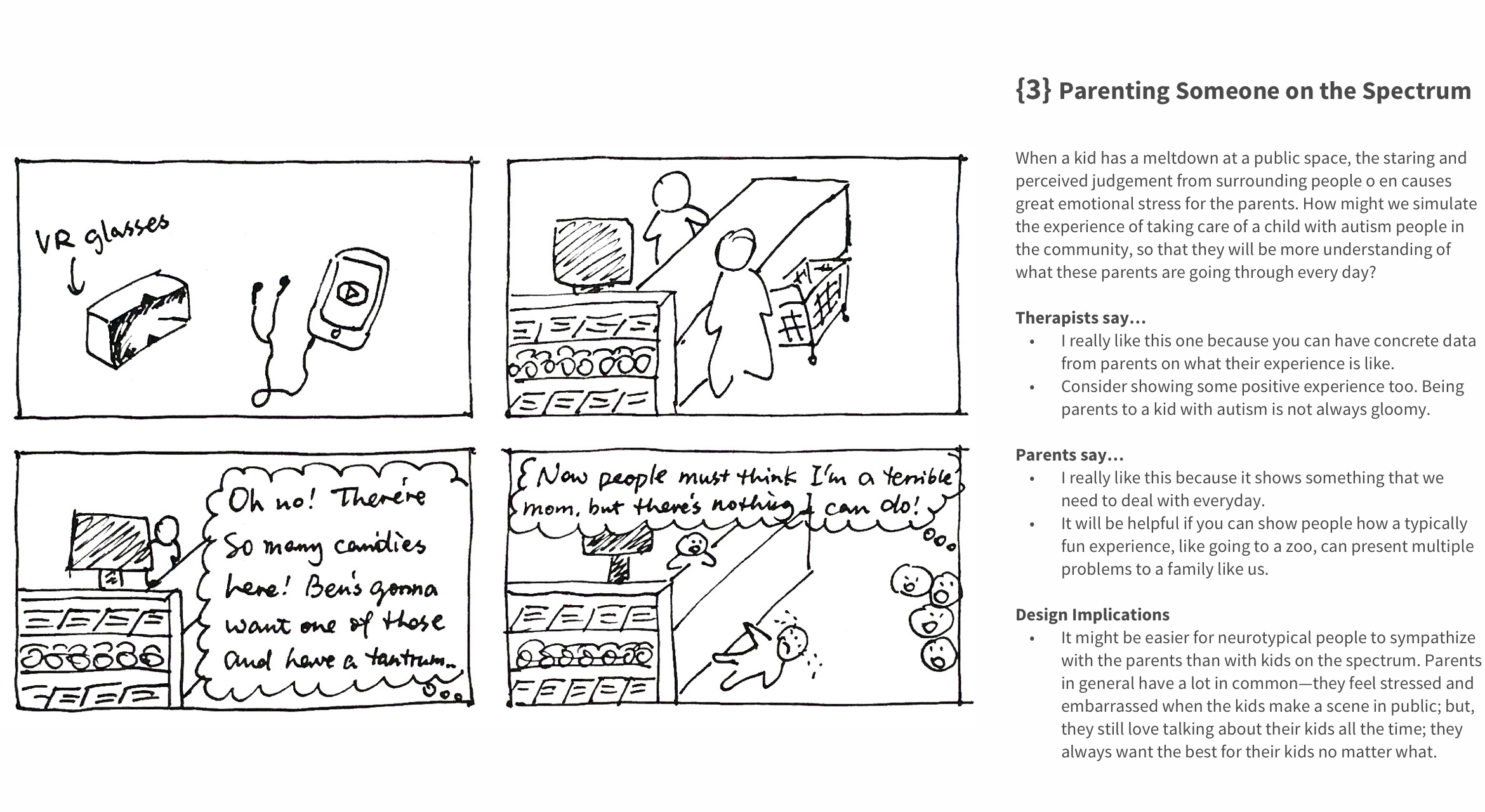
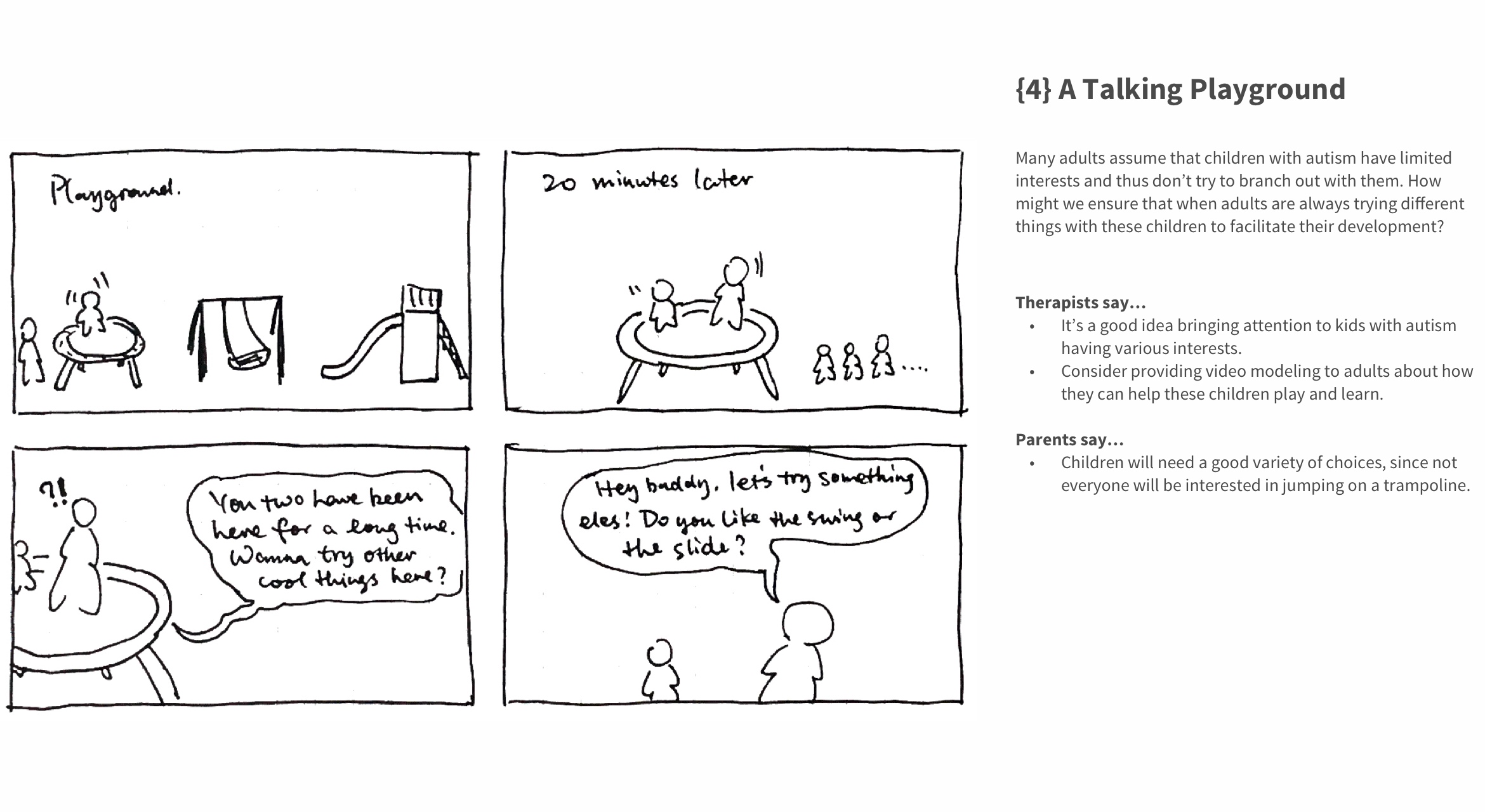
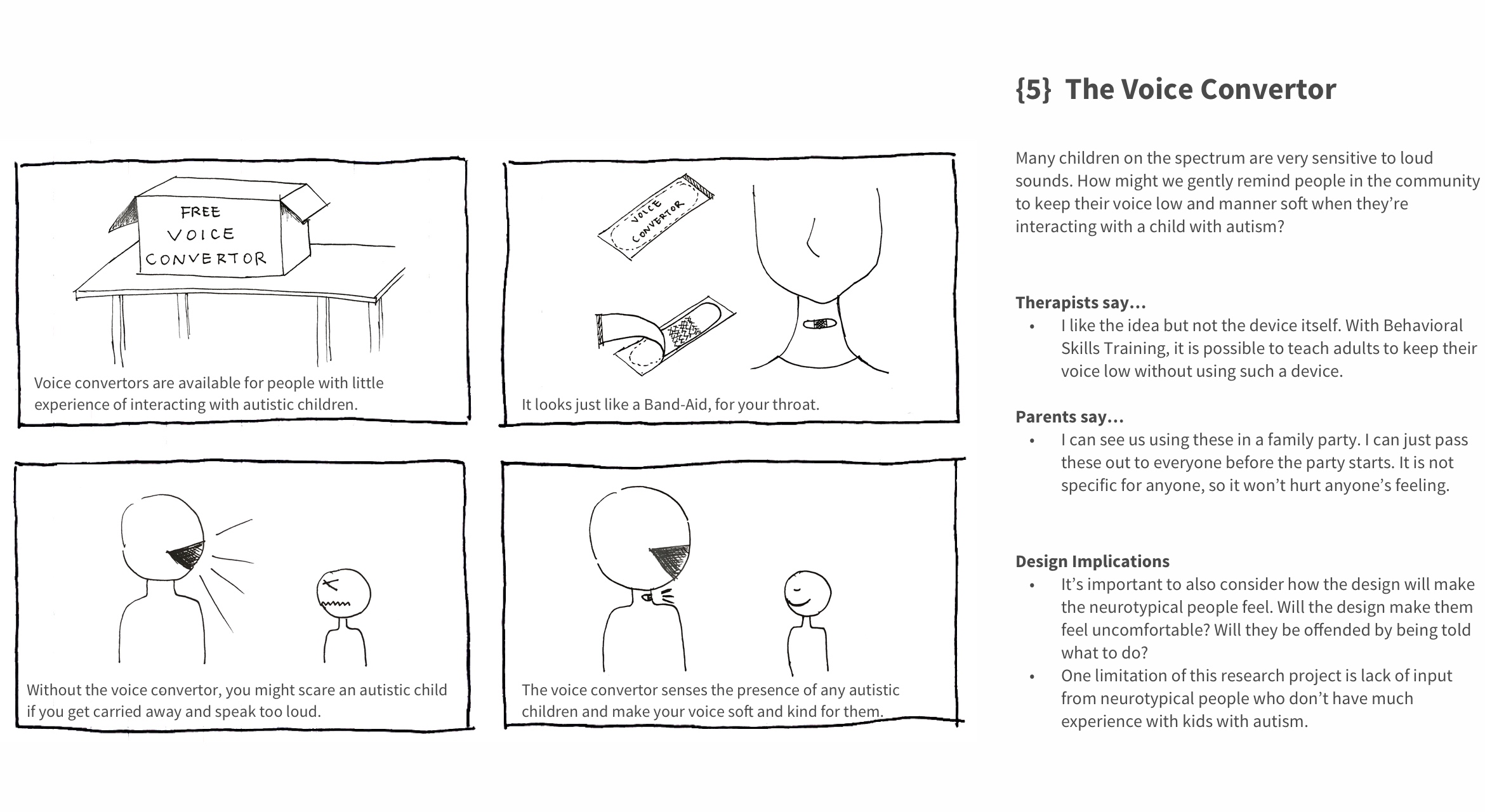
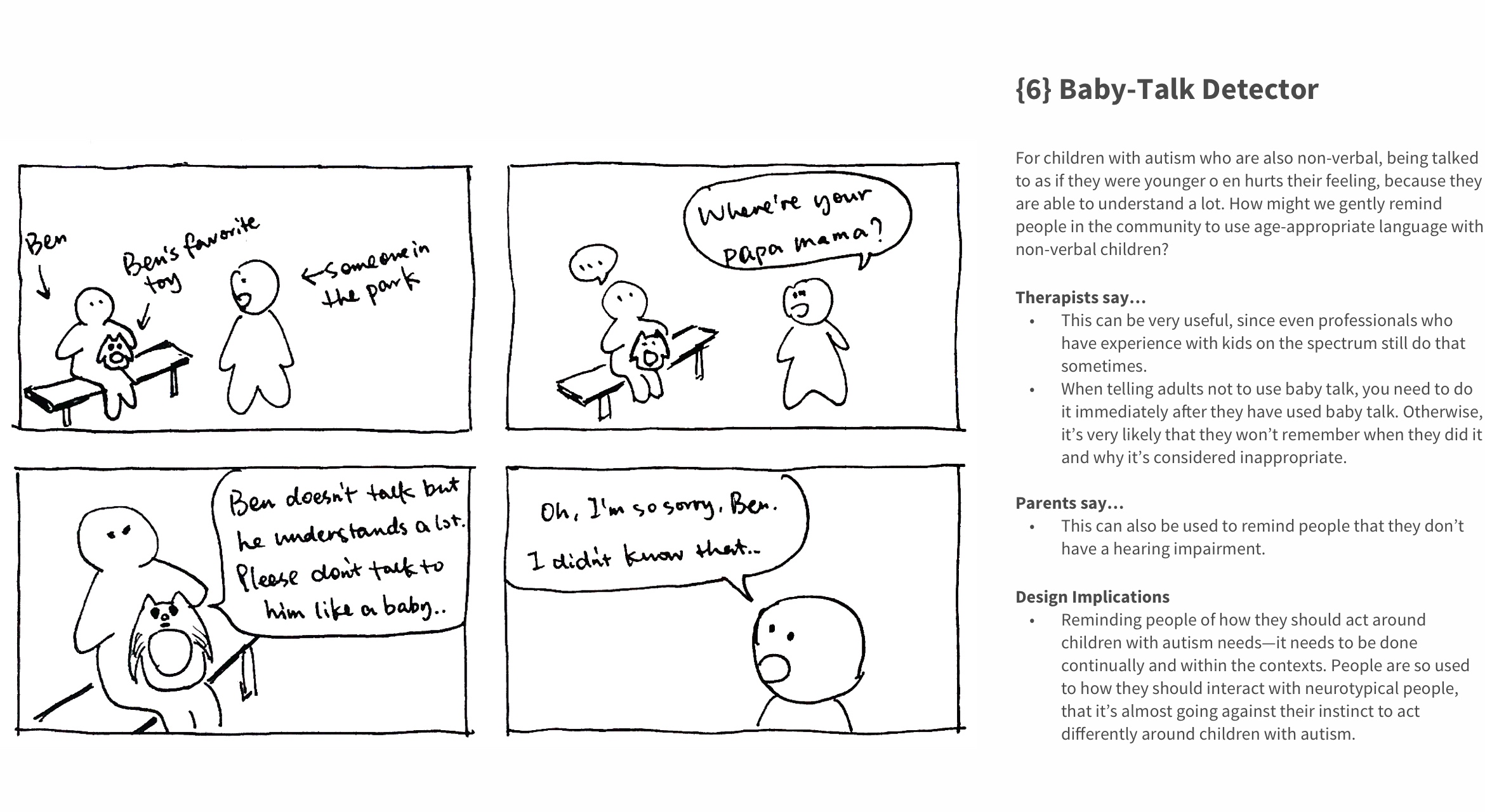
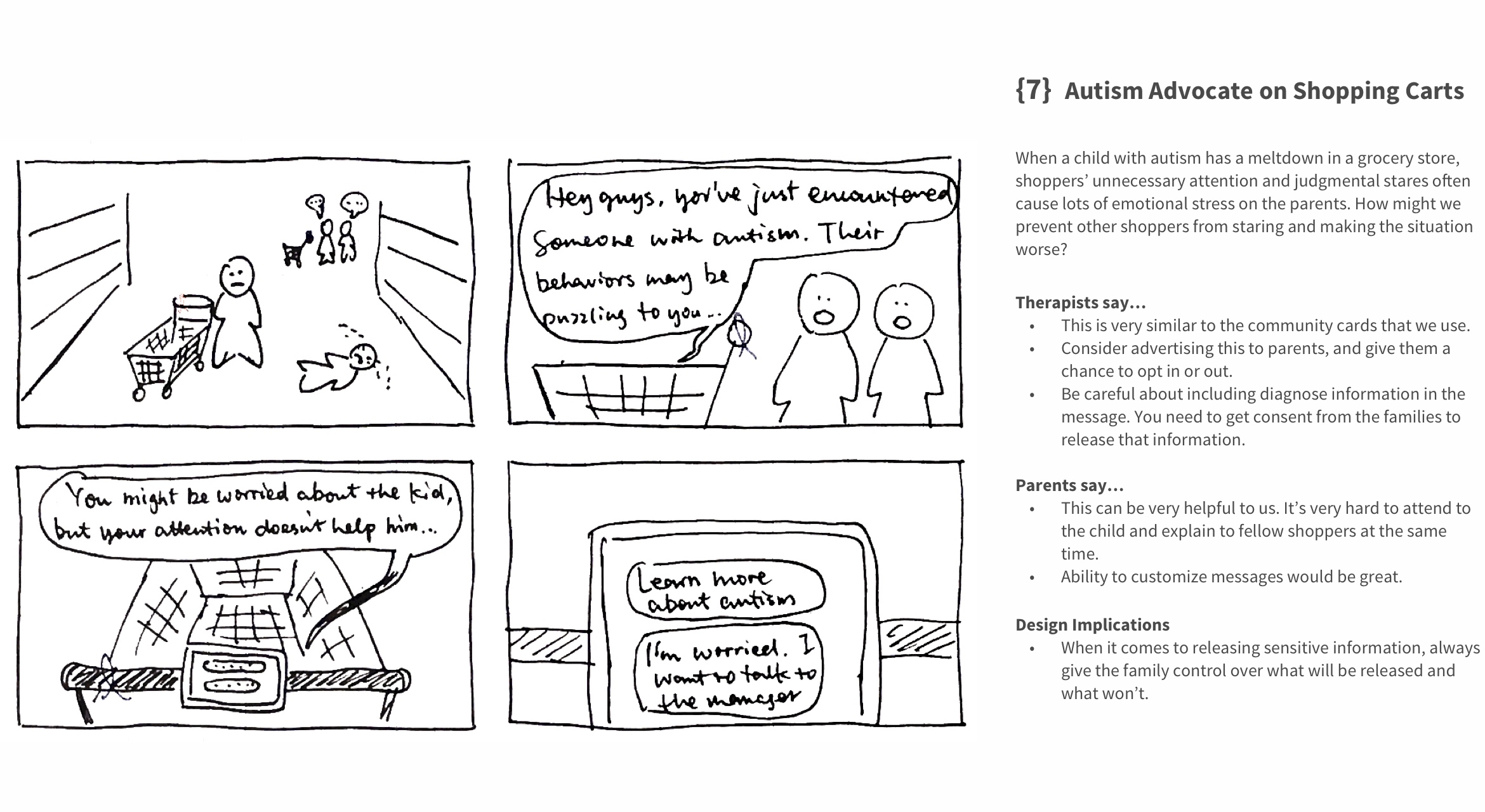
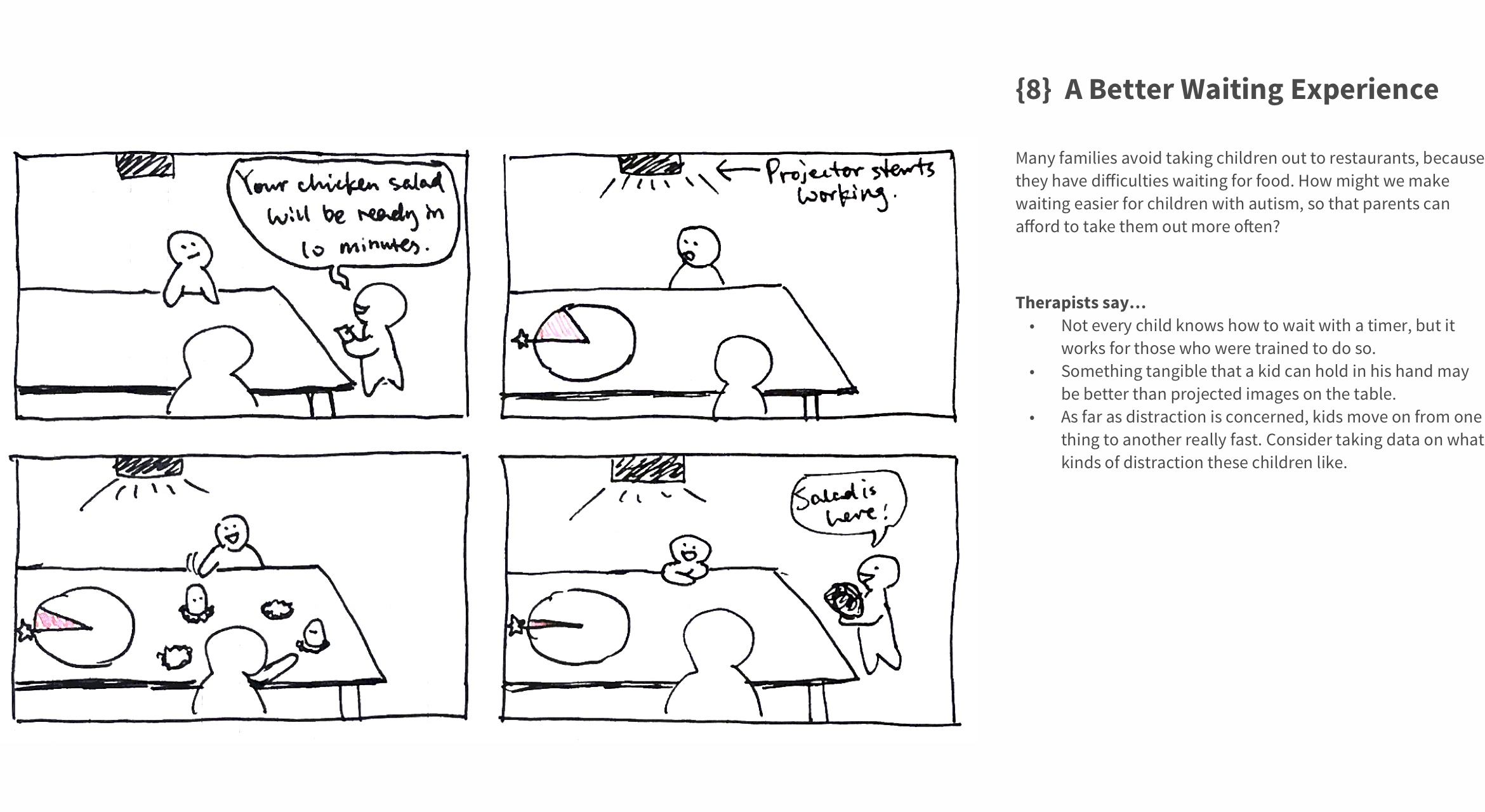
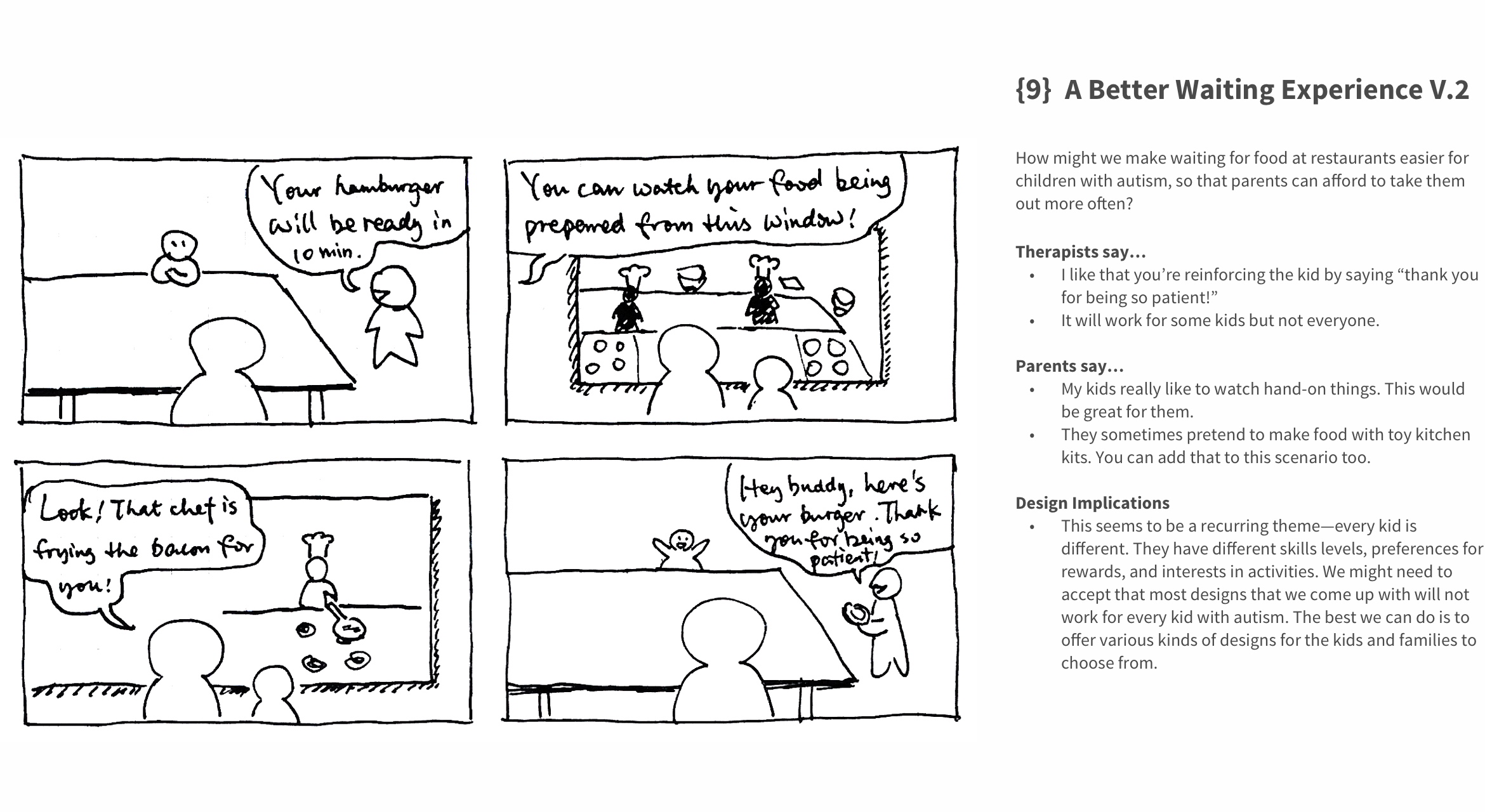
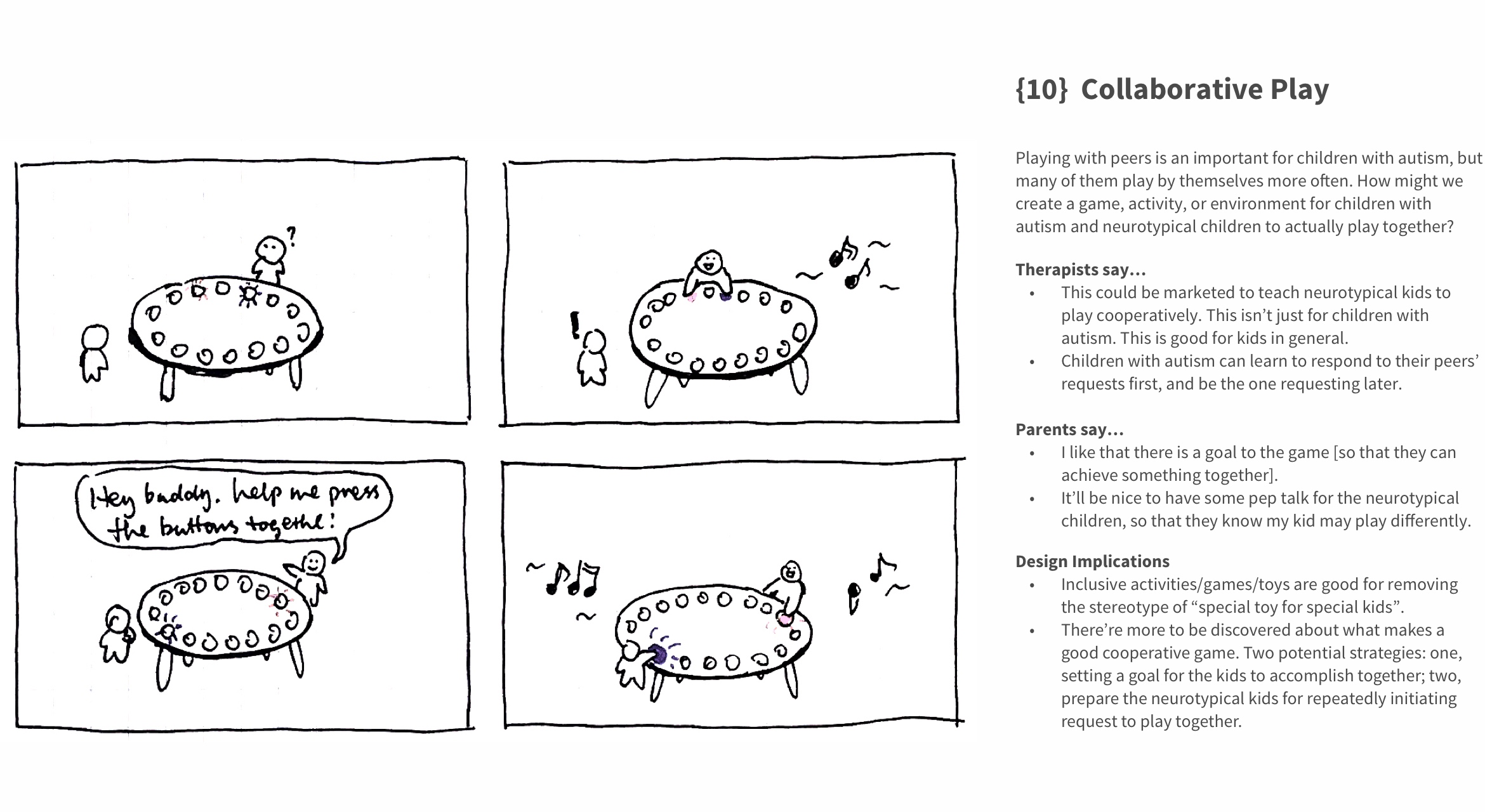
What are some difficult situations that these families need to deal with?
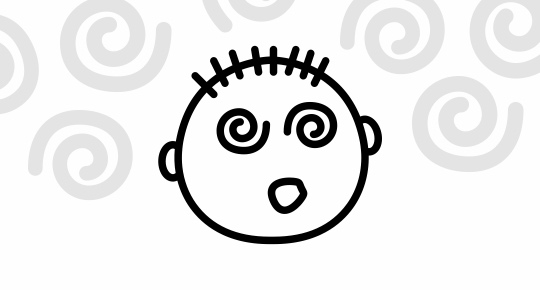
There are too much sensory stimuli in the environment that could cause a meltdown.
“We were at the library once. He saw another kid’s candy, immediately wanted it, couldn’t have it, got mad, and started being aggressive towards me because I was blocking him from getting the candy.”
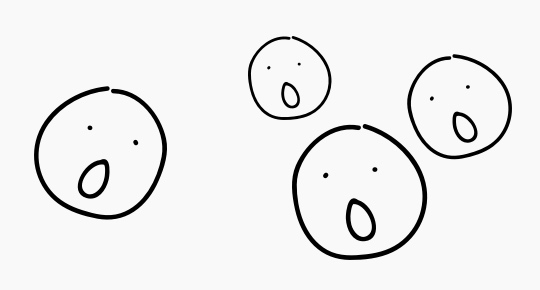
When the child has a meltdown, bystanders’ attention often worsen the situation.
“There’s a lot of kids there, so they have to wait in line. This one learner, he would just fall to the floor and lay there crying, and we were just letting him do it, because we can’t make the line go any faster. There were some moms and they were looking and staring at us like ‘I wanna pick that kid up but I can’t and I’m not supposed to.’”
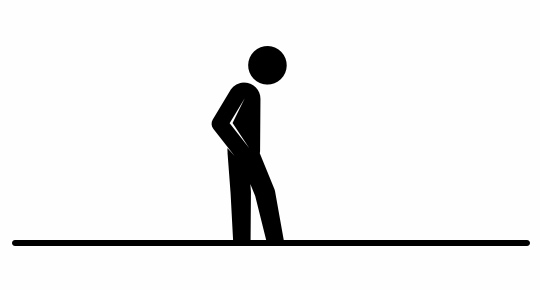
Sometimes people assume that these children aren’t capable of doing more.
“Her teacher one day told me ‘she loves to do puzzle, and it’s because of her autism.’ But no, it’s not. She likes to do puzzle, but have you tried this, this, and this? Because she likes to do those things too.”
What are some design strategies for promoting autism awareness and acceptance?

Evoke empathy with children with autism or their parents.
People don’t know how to act around someone with autism largely because they’ve never met someone with autism. What if we create a way for them to experience what these children and their parents have to go through every day?

Guide neurotypical people to act properly around these children, within the contexts.
“Acting properly” can means many different things— talking gently, using age-appropriate language, not judging them, being patient when they learn, trying different things with them. What if we can prompt people to do the right things in the right contexts?
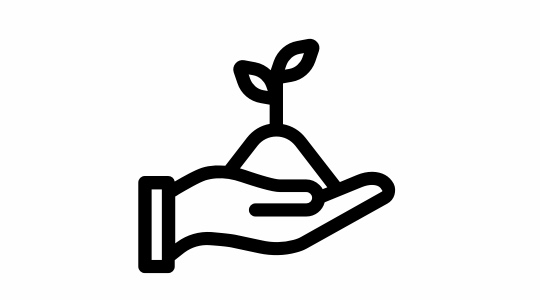
Alter the environments to provide reasonable accommodations in the public.
Accommodation is not meant to be a permanent aid for these children; it’s more like a scaffolding that enables them to be in the community to learn, so that one day they won’t need the accommodation any more. What if we can provide some necessary accommodations outside home and school?
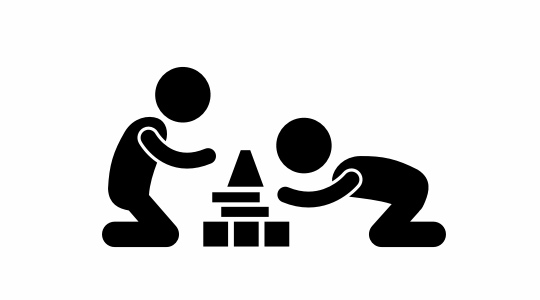
Create opportunities for kids in general to play together.
Interacting with their neurotypical peers is an important opportunity for children with autism to pick up social skills, but we tend to see more parallel play than cooperative play when these children are together. What if we can create a game for them to play more cooperatively?
What are some constrains/pitfalls to look out for?

Every kid is different. You can’t design for all of them at the same time.
If we try to come up with a persona for a child with autism, we will probably end up with a dozen and these still won’t cover everyone. We need to accept that we can’t design for all of them at once, but we can still o er di erent solutions for children with di erent needs.
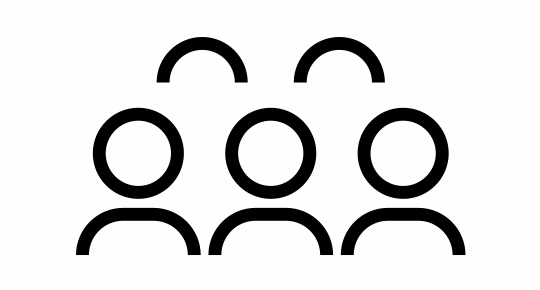
Design for the whole community, not just for the children with autism.
I missed a link in this project by not getting feedback from those who have no experience with autistic children. When a parent said “I like this design because it won’t embarrass my grandma”, I realized that we need to design something that the whole community can receive well and bene t from.
REFLECTIONS
Predisposition. Planning. Research through design.
Be aware of my predispositions and constantly re-evaluate them through research, design, and reflection.
At first, when I saw that most design effort were devoted to intervention rather than acceptance, I thought “Why do we have to change them? Why can’t we just accept that they’re not the same?” Soon, I came to the predisposition that autism is part of the human biodiversity that needs to be accepted.
Then, I had a reality check when one therapist told me, “It’s great that people are aware, but no matter what the world does, not every single person is gonna know what autism is.” I felt shocked, upset, and pessimistic. So, the whole project is based on a wrong predisposition, huh?
After the initial shock, I asked myself “What’s the point of autism awareness? Why do all these activists advocate for them?” That’s when I realized that neither intervention nor awareness is the whole story. Intervention can teach these children skills at therapy center, and awareness/acceptance will let them practice these skills in community.
Later when I ideated for design concepts, I no longer thought of autism awareness as asking everyone to accept individuals with autism unconditionally. Instead, I thought of it as giving neurotypical people little nudges, reminding them to be compassionate, and giving autistic children more chances to be in the community to learn and grow.
Reach out to lots of potential participants. Leave enough leeway when planning the research schedule.
I started emailing people, asking for research opportunities, as soon as this project started. I expected it to be time-consuming, but I didn’t expect to spend seven weeks on getting in touch with people, getting IRB approval, working through research plans and logistics, and scheduling meetings, before I finally had the first formal interview. With hindsight, seven weeks are a very reasonable timeframe. Everything takes time.
Start the outreach as soon as I know whom the project is about—that’s what I will do in the future. I’ll never forget that burning feeling “my project is due in 5 weeks and I just had my first interview!”
Research through design. Thinking through doing.
The first thing I learned in design school is that design benefits from good research. This project is the first time I experienced how research can benefit from design activities—how designing and making stuff can help me think better and see insights from a bunch of disorganized research data.
When I came home from an interview with a two-hour recording, I would turn it into pages of transcript, organize it in bullet points and stories, highlight interesting comments, put up a wall of post-it notes…Still, I felt like I missed something—something in the rich data that I couldn’t capture with a one-page summary, something that might be useful to a designer but I couldn’t say exactly how.
I turned to design for help this time. The process of coming up with ten design concepts helps me synthesize the rich research data into design scenarios and stories. After that, I was able to extract actionable insights and design strategies from these concepts.
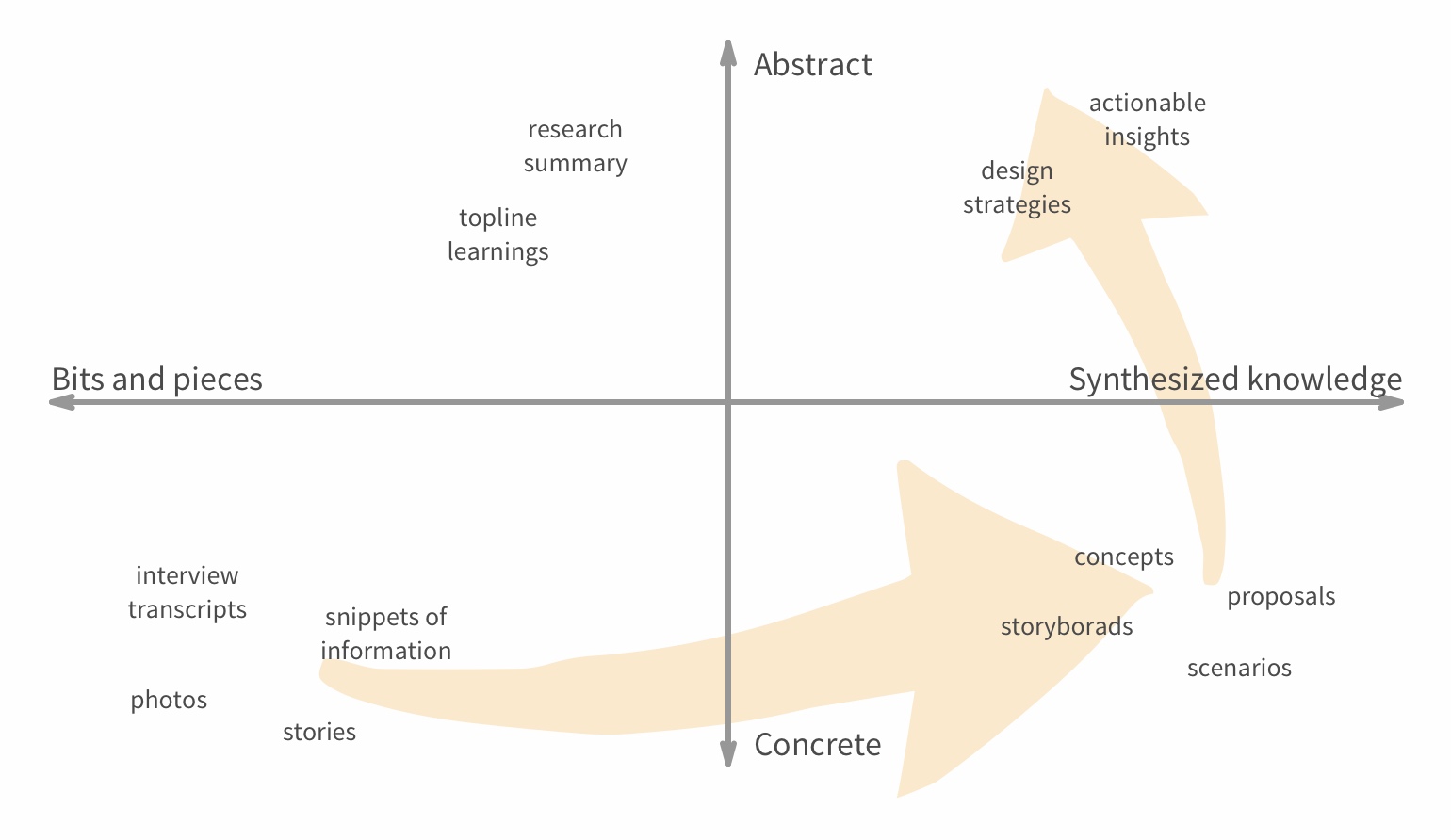
More work
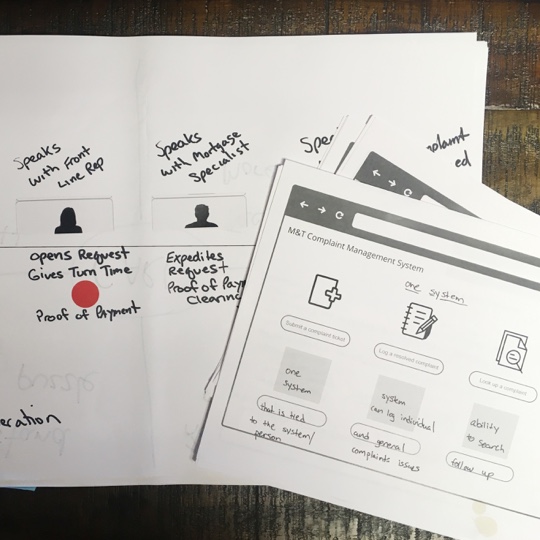
From complaints to happier customers and better productsdiscovery | experience strategy | 2019
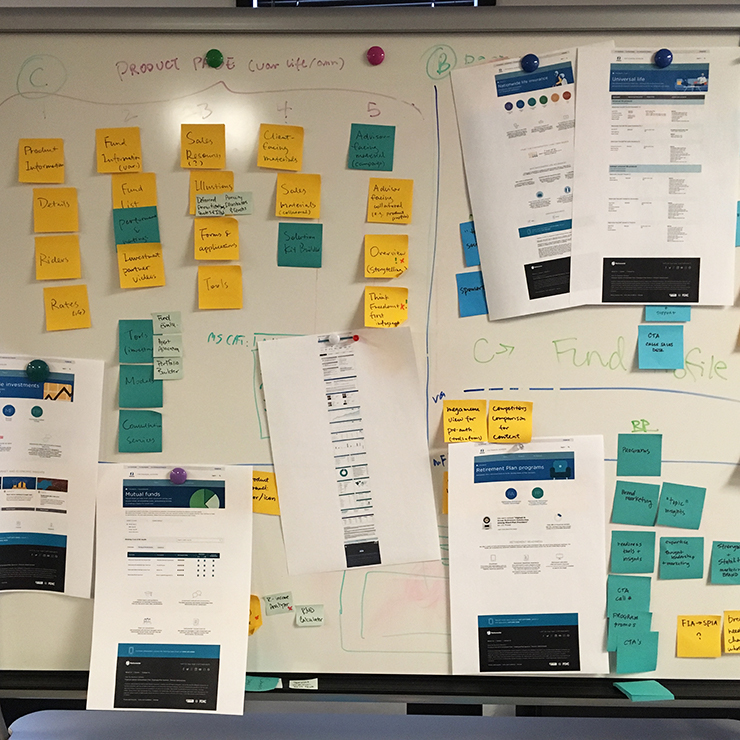
Navigate Complexity: Nationwide Financial Website Redesigngenerative | evaluative | concurrent projects | 2018
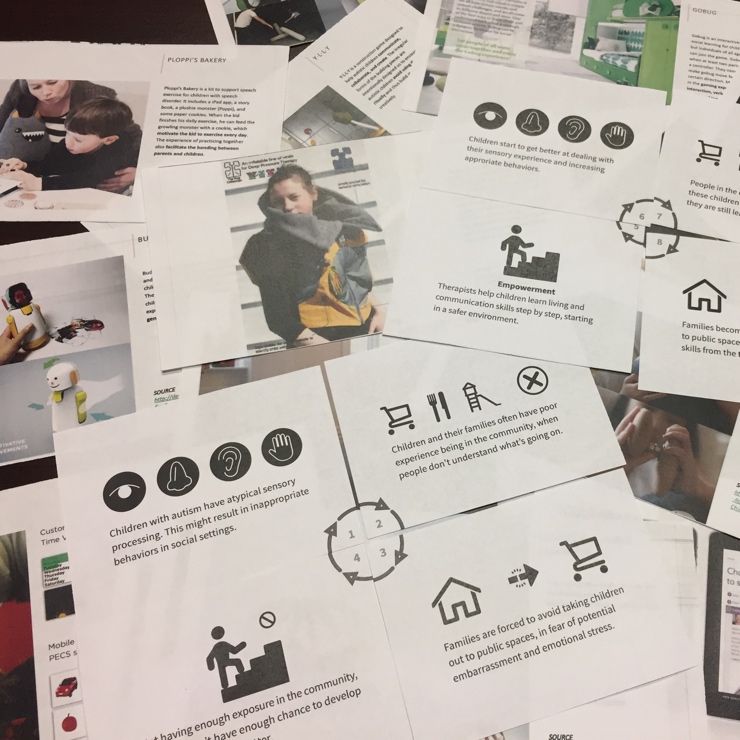
Design for Autism: Empowerment, Awareness, and Acceptancegenerative | co-design | research through design | 2017
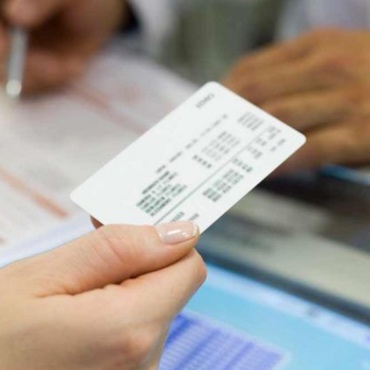
Health Insurance Simplifiedgenerative | experience design | 2016
© 2019 Yiying Yang